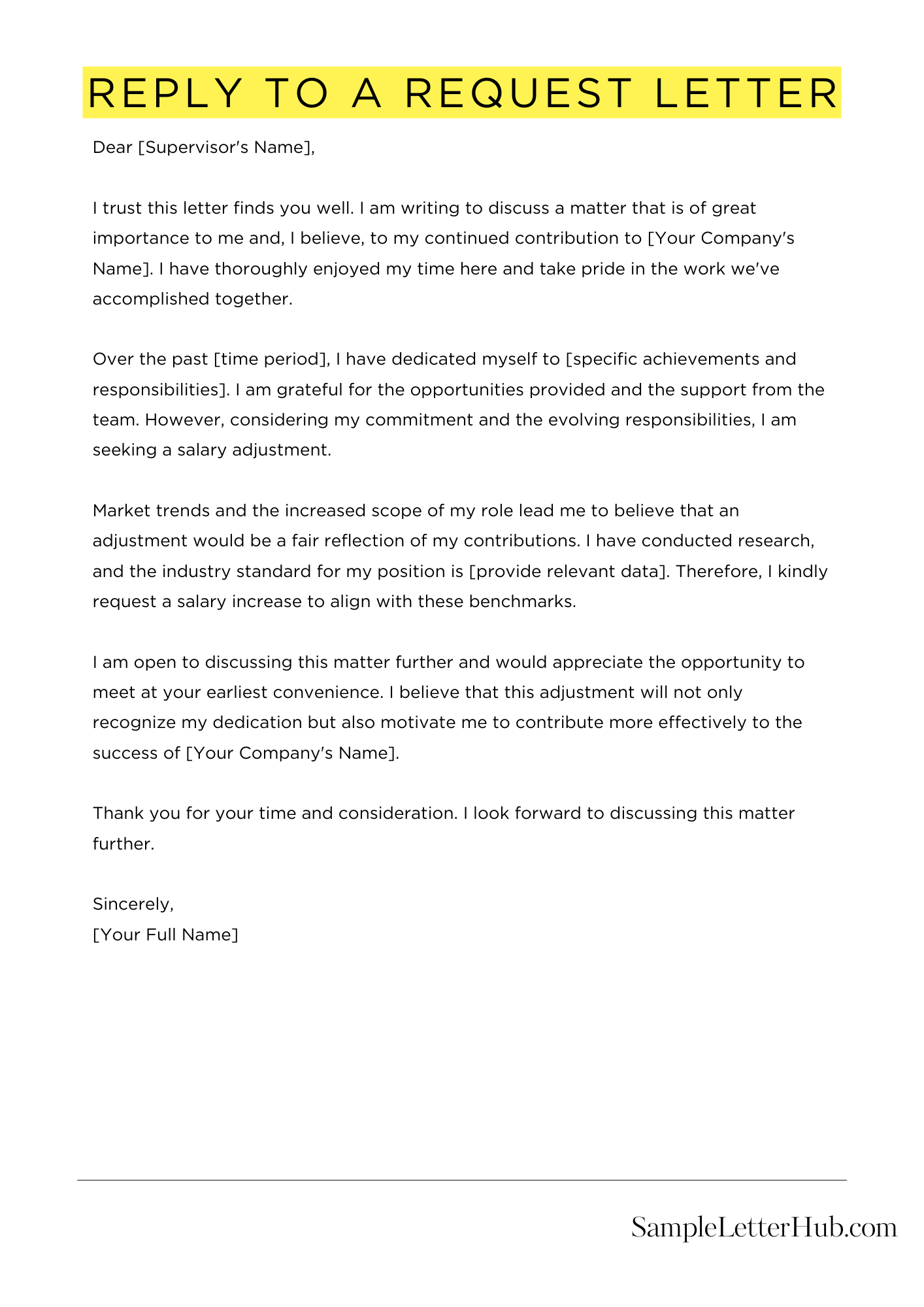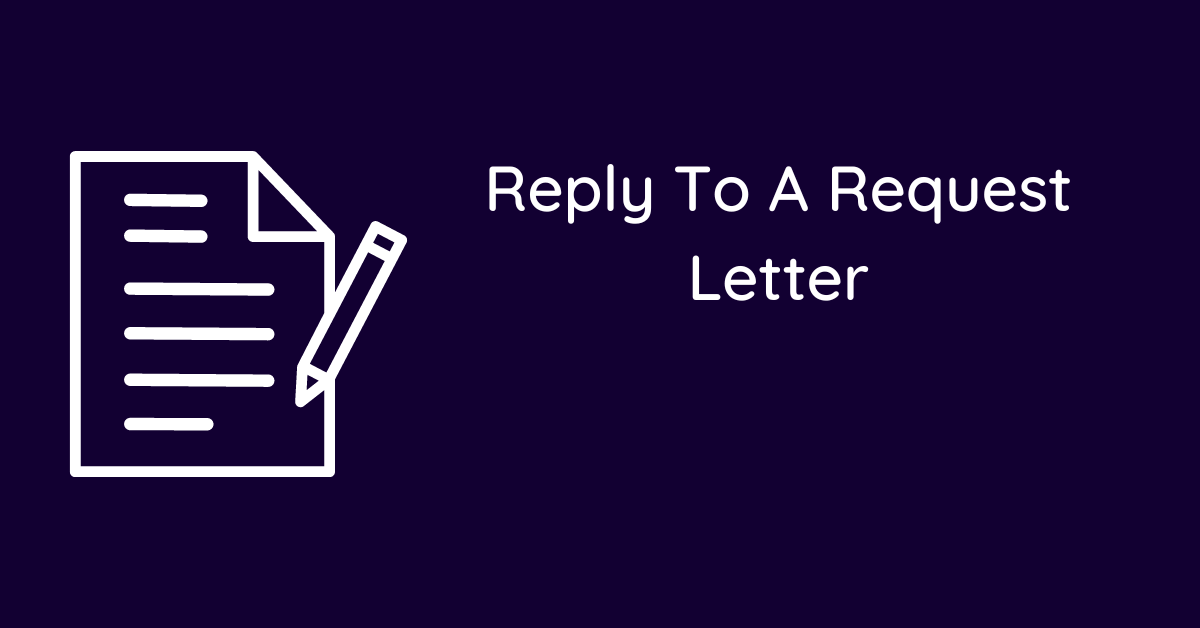Replying to a request letter is an essential part of professional communication. It allows you to acknowledge the request, provide information, or take action as needed. A well-crafted reply letter can build relationships, foster goodwill, and ensure that requests are handled efficiently.
In this article, we will share a collection of templates, examples, and samples of reply to a request letters. These resources will provide you with a starting point for drafting your own letters, ensuring that they are professional, informative, and effective.
Whether you need to grant a request, decline a request, or provide additional information, our samples will guide you through the process of crafting a clear and concise reply letter.
Response to Request Letter
Dear [Recipient Name],
Thank you for your letter dated [date] regarding your request for [briefly state the request]. We appreciate your interest in our organization and the services we provide.
After careful consideration, we have decided to [accept/decline] your request. We understand that this may not be the outcome you were hoping for, and we apologize for any inconvenience it may cause.
If we have accepted your request, please find enclosed the necessary documentation and instructions. We encourage you to review them thoroughly and contact us if you have any questions.
If we have declined your request, we regret that we cannot fulfill it at this time. However, we would be happy to provide you with additional information or resources that may be helpful.
We value your support and appreciate the opportunity to have considered your request. Please do not hesitate to contact us if you have any further inquiries.
Sincerely,
[Your Name]

How to Write Reply To A Request Letter
1. Start with a Salutation
Begin your letter with a formal salutation, such as “Dear [Recipient Name]”. If you do not know the recipient’s name, you can use a more general salutation, such as “To Whom It May Concern”.
2. State the Purpose of Your Letter
In the first paragraph of your letter, state the purpose of your letter. This will help the recipient understand why you are writing and what you are asking for. For example, you could write, “I am writing to you today to request a donation to our local food bank.”
3. Provide Supporting Information
In the body of your letter, provide supporting information that will help the recipient understand why your request is important. For example, you could provide statistics about the number of people who are struggling with hunger in your community or describe the programs that your food bank offers.
4. Make Your Request
In the final paragraph of your letter, make your request. Be clear and specific about what you are asking for. For example, you could write, “I am asking for a donation of $100 to help us provide food to those in need.”
5. Thank the Recipient
End your letter by thanking the recipient for their time and consideration. You could also express your hope that they will consider your request. For example, you could write, “Thank you for your time and consideration. I hope that you will consider my request.”
6. Include a Call to Action
If you want the recipient to take a specific action, such as making a donation or volunteering their time, include a call to action in your letter. For example, you could write, “Please visit our website to make a donation today.”
7. Proofread Your Letter
Before you send your letter, proofread it carefully for any errors in grammar, spelling, or punctuation. You may also want to have someone else review your letter before you send it.
FAQs about Reply To A Request Letter
What should be included in a reply to a request letter?
A reply to a request letter should include the following:
- A clear and concise statement of whether or not the request can be granted.
- An explanation of the reasons for the decision.
- A statement of any alternative actions that may be available.
- A polite and professional tone.
How should a reply to a request letter be formatted?
A reply to a request letter should be formatted in a business letter format. This includes using a standard font, font size, and margins. The letter should also be single-spaced and left-justified. The sender’s address, date, and contact information should be included in the header. The recipient’s address should be included in the inside address. The body of the letter should be concise and to the point. The closing should be polite and professional.
What is the difference between a request letter and a reply to a request letter?
A request letter is a letter that is written to ask for something. A reply to a request letter is a letter that is written in response to a request letter. A request letter typically includes a statement of the request, the reasons for the request, and any supporting documentation. A reply to a request letter typically includes a statement of whether or not the request can be granted, the reasons for the decision, and any alternative actions that may be available.
What are some tips for writing a reply to a request letter?
Here are some tips for writing a reply to a request letter:
- Be clear and concise.
- Be polite and professional.
- Explain the reasons for your decision.
- Offer alternative actions, if possible.
- Proofread your letter before sending it.
What are some common mistakes to avoid when writing a reply to a request letter?
Here are some common mistakes to avoid when writing a reply to a request letter:
- Being vague or ambiguous.
- Being rude or unprofessional.
- Not explaining the reasons for your decision.
- Not offering alternative actions, if possible.
- Sending a letter that is full of errors.

